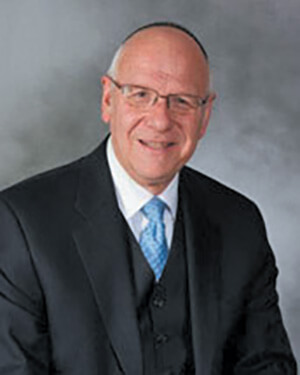
Parshat Beha’alotcha
This week’s haftarah is one that is quite familiar to us as it is read twice each year: on Shabbat Chanukah as well as on this Shabbat, Parshat Beha’alotcha. The common thread that connects the two Shabbatot is the navi Zecharya’s vision of the menorah, the symbol of Chanukah and the opening parsha of Beha’alotcha.
Understanding the prophet’s call to the nation to rejoice over the impending return of Hashem’s Shechina, divine presence, that will once again dwell in their midst, is a source of disagreement among the meforshim. Most see this as a prediction of the imminent construction of Bayit Sheni, the Second Temple, and Hashem’s reassuring message that He supports their undertaking. Zecharya, a navi who prophesied during the early Second Temple era, encouraged the people to rebuild the destroyed Beit Hamikdash, focusing primarily on the need to retain a level of sanctity they had failed to keep during the First Temple. This message was similar to that of his contemporary, the prophet Chaggai, who also reassured the people that Hashem would be pleased with the construction of the new Temple. Each navi, however, emphasized a different element necessary for the project. Chaggai urged the nation to take practical steps and begin the construction, while Zecharya focused upon the spiritual change that would be necessary to keep Hashem’s presence dwelling within Israel.
The 15th-century commentator, Don Yitzchak Abarbanel, differs with most of the parshanim and sees the vision of Zecharya as one that was not meant to describe the events that awaited the prophet’s generation, but rather one that was describing the final redemption in the future. Indeed, he suggests, the prophet was telling the people that Hashem’s call for them to rejoice was based upon the fact that the final redemption would not be as the past ones, for, once redeemed, Israel would never again be exiled (an understandable explanation from one who was exiled himself three separate times!).
The Abarbanel remains consistent in his approach when, in the third pasuk of the haftarah, the navi states: “v’nachal Hashem et Yehuda chelko al admat hakodesh…,” a statement explained by most meforshim as meaning that Hashem will take Yehuda as His heritage. But Don Yitzchak Abarbanel explains this phrase as a promise, no, a guarantee for the future that “Hashem will grant Yehuda his portion in His Holy Land…” It was this commentary that moved me to write this article. The Abarbanel, a remarkable leader of the Jewish community in Spain, a man who chose to join his people into exile in 1492 and wandered to Naples then to Messina and then to Corfu and from there to Monopoli and finally to Venice, the exceptional rav knew all too well what it means to be exiled. And he shared with us what it means to be redeemed. Redemption for the Jews has come, he predicts, when Yehuda will once again be granted independence, a return to “his portion,” in the Holy Land.
I imagine that Don Yitzchak looks down upon us today with a smile on his lips and a tear in his eyes. His peirush has been realized. His people have been given back their portion. Never to be exiled as he was, nor be forced to wander, as he did.
The message of the menorah has been realized. It was not with an army or military strength that the holy people returned to their holy land. It was with the holy spirit that dwelled within them, generation after generation, reminding them of the dream that Zecharya left with them.
A dream that we in Israel live each and every day.
By Rabbi Neil N. Winkler
Rabbi Neil Winkler is the rabbi emeritus of the Young Israel Fort Lee and now lives in Israel.










